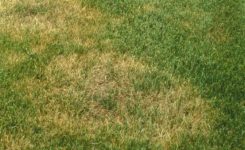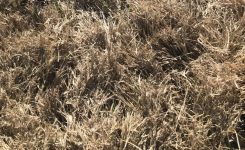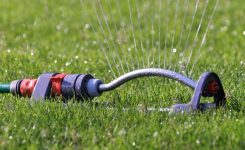Lawn Care Services, Lawn Treatment Solutions Blog
Why is My Bermudagrass Thin in Some Places?
 Why is My Bermudagrass Thin in Some Places?
Why is My Bermudagrass Thin in Some Places?
Almost every Bermudagrass lawn that we encounter has areas where the grass is thin. What do these lawns have in common? Shade.
Bermudagrass Needs Sun (A lot of it!)
Bermudagrass needs a lot of sunlight to stay thick. If you have a Bermudagrass lawn, then you have probably noticed the phenomenon of having thin spots in your yard.
Your Bermudagrass lawn is most likely a hybrid. Builders of the new subdivisions in the Wake Forest/Rolesville area seem to prefer the hybrid Bermudagrasses to other types of grass. This is probably because they are relatively affordable and establish easily from sod. Hybrid Bermudagrasses make a very attractive lawn when cut at the proper height (approximately 1.5 – 2 inches) and frequency (approximately once per week), when they receive adequate water (approximately 1 inch per week), and when in full sun (about 8 hours per day).
One of the great advantages of Bermudagrass is that it will take a lot of abuse. It can generally withstand improper or infrequent mowing, letting your kids and pets rip and tear on it all summer, and/or neglecting to water it. While it may look a little ragged under these circumstances, Bermudagrass will usually survive, and even better, it will repair itself because it spreads aggressively by both above ground stolons and under ground rhizomes (runners).
Here’s the bad news: It won’t look as nice in areas where it receives shade at some point during the day. It doesn’t stand a chance where there is less than about six hours of full sun exposure per day.
Areas that are typically thin on a Bermudagrass lawn due to shade are those against the foundation of your house or fence, and under or near trees and shrubs. If your house is within 25-30 feet of your neighbor’s house, the Bermudagrass may be thinner between your houses. Southern exposures of your property are exceptions because they tend to receive more sunlight.
Options for Areas Receiving Less than 8 Hours of Sunlight Per Day
Along foundations, fences, and natural areas, or under the branches of trees in your yard, consider non-lawn features such as shade tolerant shrubs, perennial flowers, or ground covers.
For larger areas where you would like to have a lawn, choose a different type of grass. Centipedegrass and Zoysiagrass may do okay with 6-7 hours of sunlight. Tall Fescue does well with 5-6 hours of direct sunlight, but it is a cool-season plant that will not match your Bermudagrass well. Fine Fescues are known to survive with as little as 3-5 hours of full sun, but are generally not as heat tolerant as Tall Fescue (and they won’t match your Bermudagrass well, either).
Should I Seed the Thin or Bare Spots in my Bermuda lawn?
If you’re wondering about whether to seed the thin or bare spots in your Bermuda lawn, read our blog article to learn more: https://crownovergreen.com/2019/08/should-i-seed-the-bare-or-thin-spots-in-my-bermudagrass/








